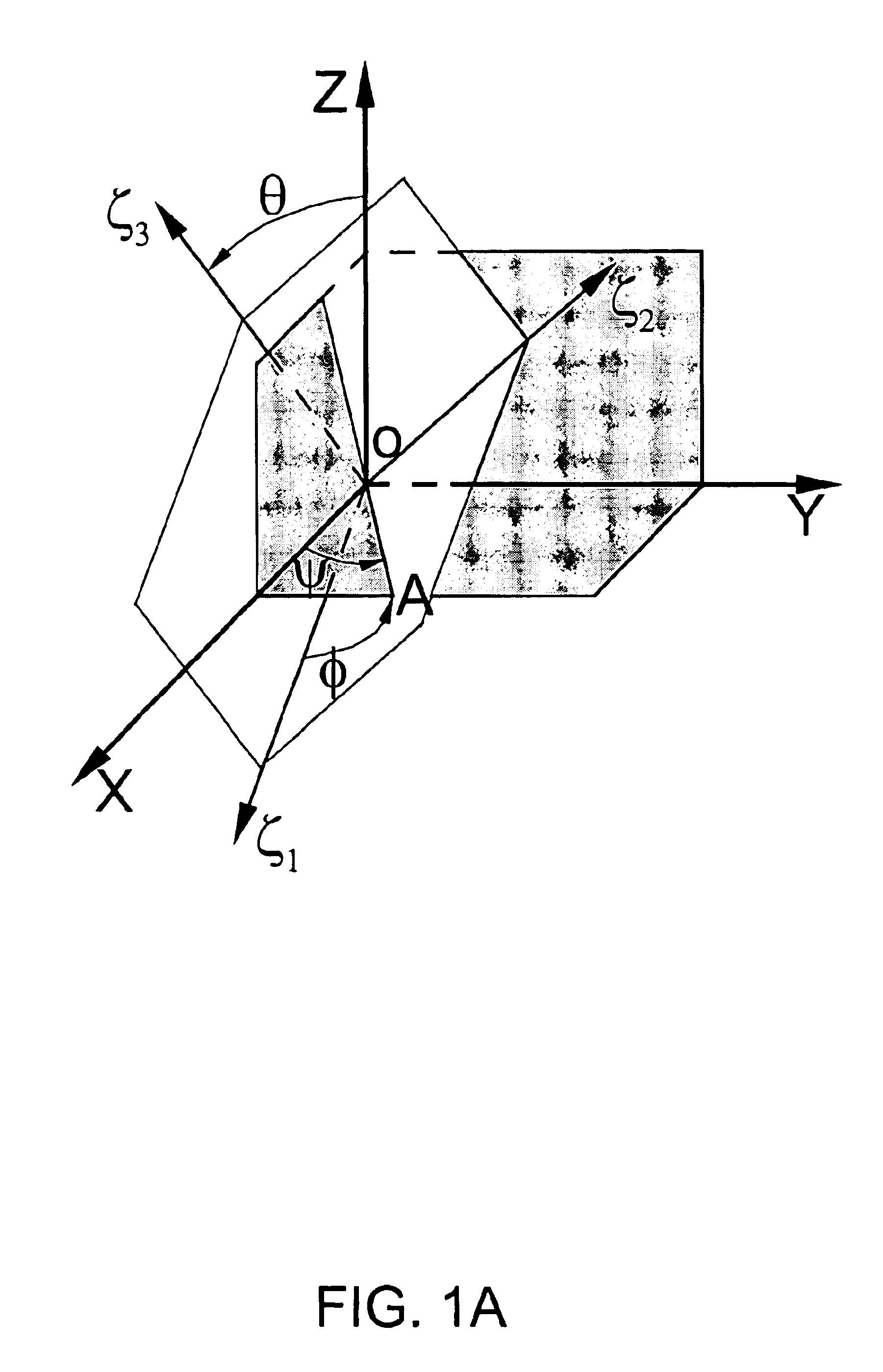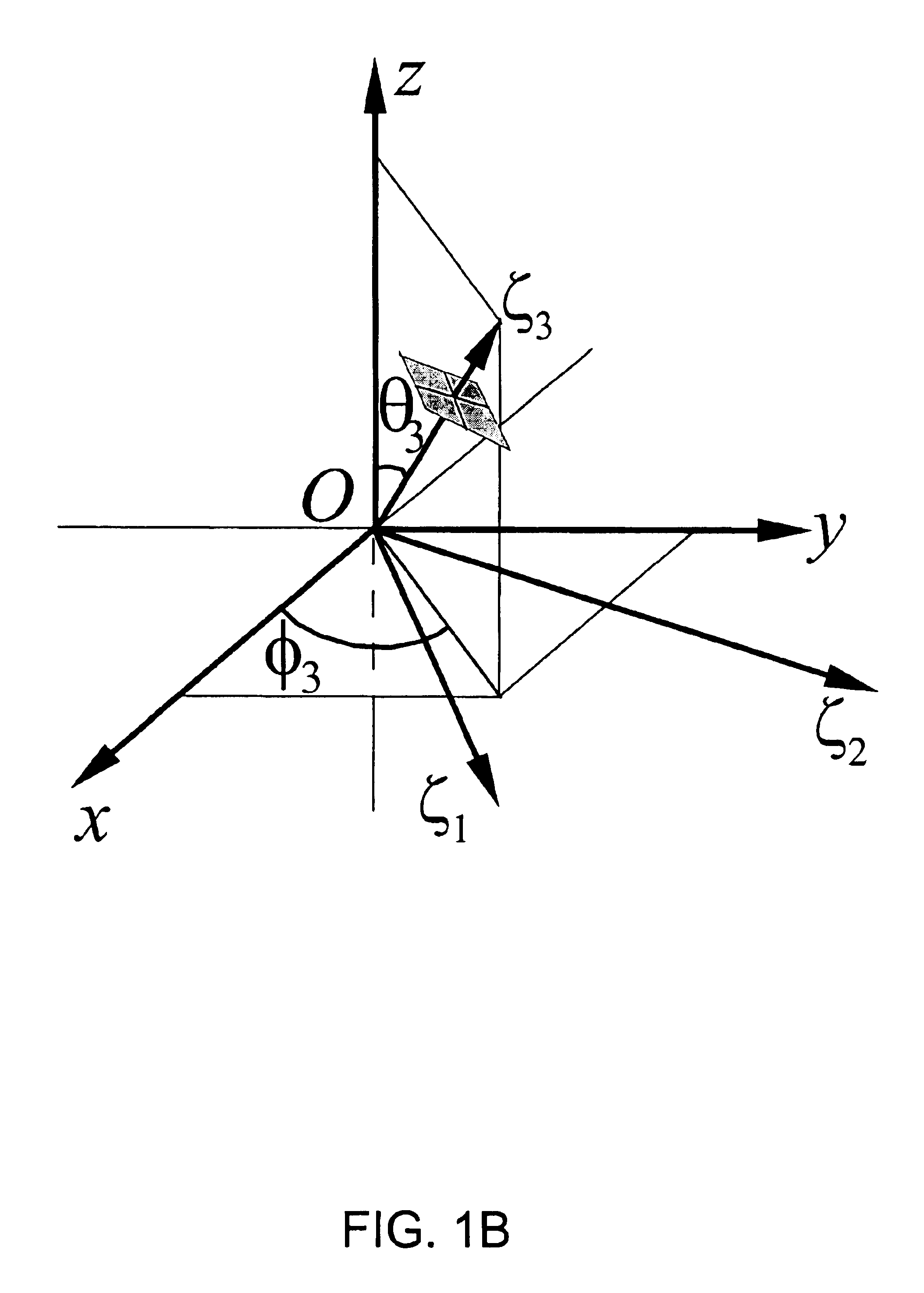Correction of magnetic resonance images
a magnetic resonance and image correction technology, applied in the field of magnetic resonance imaging, can solve the problems of increasing non-linearity, increasing the difficulty of image translation and distortion, so as to avoid artifacts in brain images.
- Summary
- Abstract
- Description
- Claims
- Application Information
AI Technical Summary
Benefits of technology
Problems solved by technology
Method used
Image
Examples
example 1
A. Example 1
[0289]A set of high speed SONATA gradients manufactured by SIEMENS AKTIENGESELLSCHAFT in Germany was analyzed. The set of SONATA gradients was interfaced to an OXFORD MAGNET TECHNOLOGY 4T whole body magnet and the gradient inhomogeneities were measured using a 24 plane spherical harmonic deconvolution NMR plot. The shimmed magnet was plotted first, followed by two more plots in which a constant current was applied to the X and Z gradients respectively. The harmonics for the shimmed field were subtracted from those generated by the gradients. For simplicity, in this case, it was assumed that the X and Y gradient distortions were identical.
[0290]The harmonics of interest are listed in Table 1A. Only 4th order harmonics are listed as this was sufficient for image correction. For reference, Table 1B shows the harmonics to 7th order. The magnetic field distributions for the X, Y, and Z gradients are shown in FIG. 11.
[0291]It is clear from these isomagnetic plots that the grad...
example 2
B. Example 2
[0298]As discussed in Example 1, a spherical harmonic deconvolution of the X, Y, Z gradients of a SONATA gradient set was carried out at 4T. It was assumed that the same gradient impurities are present with all manufactured SONATA gradients and the harmonic deconvolution of the gradients at 4T can be used to correct images acquired using a 1.5T SIEMENS SONATA scanner. Otherwise, as discussed above, the particular gradients for a given scanner should be mapped and stored in a look-up table and applied to correct distorted images.
[0299]Imaging experiments to assess gradient linearity were performed using a phantom manufactured by BRUKER MEDICAL in Germany. This phantom consists of a cylinder having perfectly flat ends. The diameter of the phantom is 18.5 cm and the depth 3 cm. Within the phantom there are point markers, the spacing between which is a known distance, namely, 2 cm for the main grid. Imaging was performed at 1.5T using a turbo spin echo sequence with a 256×25...
PUM
 Login to View More
Login to View More Abstract
Description
Claims
Application Information
 Login to View More
Login to View More - R&D
- Intellectual Property
- Life Sciences
- Materials
- Tech Scout
- Unparalleled Data Quality
- Higher Quality Content
- 60% Fewer Hallucinations
Browse by: Latest US Patents, China's latest patents, Technical Efficacy Thesaurus, Application Domain, Technology Topic, Popular Technical Reports.
© 2025 PatSnap. All rights reserved.Legal|Privacy policy|Modern Slavery Act Transparency Statement|Sitemap|About US| Contact US: help@patsnap.com



